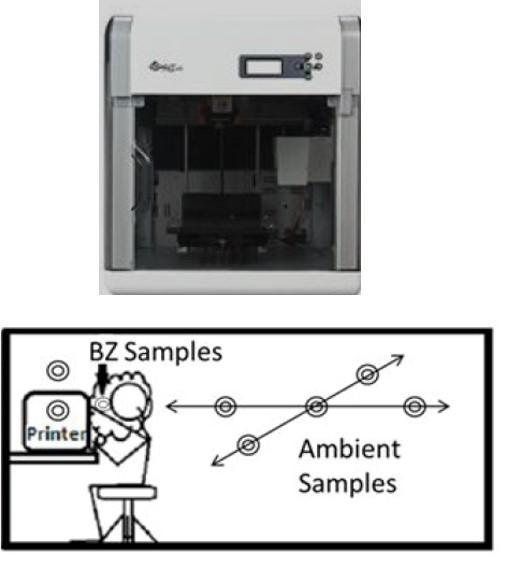
Enclosed desktop printer (top) and breathing zone (BZ)/ambient air monitoring positions (bottom).
Scientific Achievement
A model was developed that estimates the potential range of airborne particulate concentrations in and around various industrial-size 3D printers.
Significance and Impact
This application provides guidance to field industrial hygienists to determine particle emissions associated with the rapidly emerging field of additive manufacturing and thereby better describe the potential health and safety risk and lead to improved mitigation.

